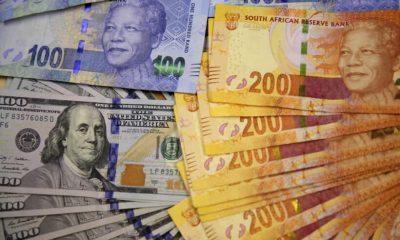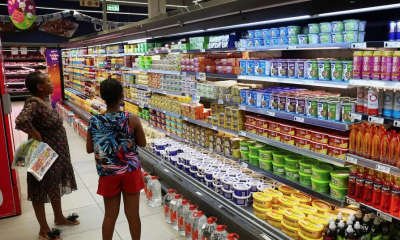Business
From 30 Cents to Over R360: What a Spur Burger Tells Us About South Africa’s Shrinking Rand

How a bite-sized treat became a luxury – and what it reveals about the money in your pocket
In the 1970s, South Africans could enjoy a burger at Spur for just 30 cents. Add a 300g Cheddamelt steak for 50 cents, and you’d walk away full for under a rand. Fast forward to 2025, and that same meal now costs over R360 – with the double Original Spur Burger priced around R129.90, and the Cheddamelt Steak (300g) at R229.90.
It’s not just a case of things getting more expensive. These menu prices reflect a deeper story about how inflation has gradually worn down the value of the rand – and how that affects the everyday South African.
A Long Road from the 70s to Now
A 750g tin of Ricoffy – once just 25 cents – now sells for R164.99. These aren’t luxury items, but their prices have soared over decades due to one powerful economic force: inflation.
According to John Orford, portfolio manager at Old Mutual Investment Group (OMIG), this creeping rise in prices creates what he calls “inflation illusion” – the tendency to underestimate just how much living costs rise over time. In OMIG’s Long-Term Perspectives report (June 2025), he explains that unless your investments consistently outperform inflation, your lifestyle will eventually slip backwards.
The Numbers Don’t Lie
Inflation in South Africa has averaged 5.4% per year since 1911, compared to 3.3% in the United States. What might seem like a small difference adds up to a major decline in purchasing power over generations.
Before 1980, South Africa’s inflation closely tracked global trends. But from the 1980s onward, local factors – apartheid-era economic isolation, high wage growth, and expansive state spending – caused domestic inflation to rise much faster. Even as global inflation eased in the 1990s, ours remained high until the Reserve Bank adopted formal inflation-targeting policies in 2000.
Recent shocks like COVID-19 and the Russia–Ukraine war have triggered another round of inflation – seen clearly in everything from fuel prices to grocery bills.

Image 1: Spur Menu
Not Just About Money – It’s a Lifestyle Shift
This isn’t just about what a burger costs. It’s about how daily life has changed. What used to be a casual meal at Spur is now a budgeted treat for many South Africans.
Scroll through social media and you’ll find nostalgia-drenched comments like:
“Back in my day, R1 could feed the whole family!”
But underneath the humour lies a real anxiety – especially for middle-class households, pensioners, and anyone whose income hasn’t kept pace with inflation.
What Can You Do About It?
Orford’s advice is simple: think in real terms. A salary or investment return that rises 5% annually may feel like growth – but if inflation also rises 5%, you’re standing still. Over time, that stagnation erodes your lifestyle.
To stay ahead, your income and assets need to beat inflation, not just match it. Because inflation isn’t just an economic term – it’s something you pay for every time you fill your tank, swipe for groceries, or order a R129 burger.
So next time you sit down at Spur, just remember:
You’re not just buying lunch. You’re tasting history.
Also read: Contaminated Diesel Crisis in South Africa: What Every Driver Needs to Know
Follow Joburg ETC on Facebook, Twitter , TikTok and Instagram
For more News in Johannesburg, visit joburgetc.com
Source: Daily Investor
Featured Image: Future Media News



























